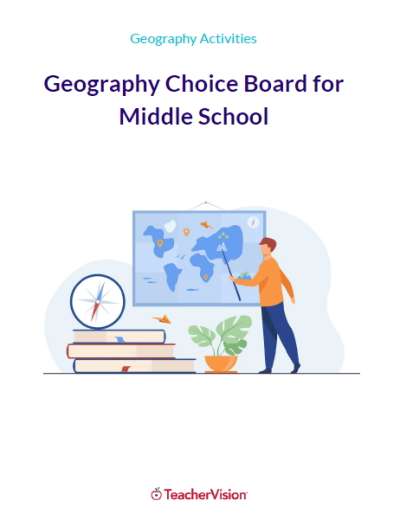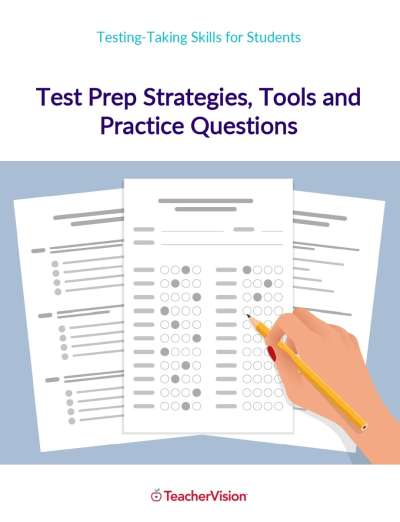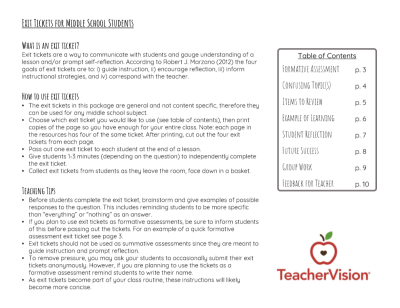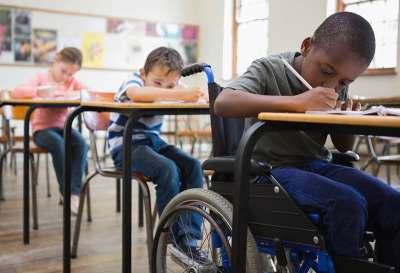Adapting Reading and Math Materials in the Inclusive Classroom
Access to the mainstream reading and mathematics curriculum is not about place. Simply placing students with mild disabilities in the general education classroom and issuing them a grade-level textbook is not enough. To ensure the individual student's the basic right to learn, teachers need to provide appropriate and reasonable adaptations. But how can this be accomplished? How can the busy professional implement adaptations for the individual children while maintaining the equilibrium of the class as a whole? The answer is flexibility.
Listed below are eight principles for making adaptations in the elementary classroom. These principles are derived from years of research in general education classrooms that included students with disabilities. The principles have been organized using the acronym FLEXIBLE. Each principal is accompanied by a set of questions in the Making Adaptations for Disabled Students chart for the teacher to consider.
1. FeasibleSuccessful adaptations must be feasible for classroom teachers to implement.
The first principle of making adaptations is that adaptations must be feasible to use. Although teachers may recognize the desirability of an adaptation for promoting student learning, if the adaptation is not doable, it is less likely to be implemented on an ongoing basis. For example, rewriting mathematics word problems using more readable terminology and bullets to highlight key steps may be desirable in helping a student read and understand, but the feasibility of the teacher's being able to rewrite texts week in and week out is not very high.
Some adaptations are naturally more practical to implement than others. Adaptations such as establishing appropriate routines, providing reinforcement and encouragement, and establishing reasonable expectations are relatively easy to accomplish. Others, such as regularly rewriting materials, using alternative materials, and individualizing instruction, require some consideration of logistics. View the Making Adaptations for Disabled Students chart to see a list of questions to consider before selecting potential adaptations.
2. LivelySuccessful adaptations must be lively, engaging, and fun.
The more lively, engaging, and fun the adaptation, the more likely it is that students will like it and will tolerate its continued use. One common criticism of remedial teaching practices is that they are dull, repetitive, and uninviting, and that they cause students to become disengaged and discouraged. The same holds true for adaptations for students with disabilities in the general education classroom. View the Making Adaptations for Disabled Students chart while searching for lively adaptations.
3. EliminatedSuccessful adaptations must be developed with the goal of working toward independence, with a gradual fading and eventual elimination of the adaptation.
Ideally, an adaptation should serve as a temporary scaffold to support student leaning. If the scaffold is not gradually removed, the student does not have the opportunity to work toward independence. Adaptations should be thought of as a temporary support a support that will eventually be faded and eliminated with supplemental instruction. The Making Adaptations for Disabled Students chart has questions to guide you in thinking about eliminating adaptations.
4. eXplicitSuccessful adaptations must have a definite purpose a purpose that is made explicit to students, other professionals in the classroom, parents, and, if necessary, the student's peers.
Adaptations are most effective when they are purposeful. If students understand how the adaptation will help them learn and are aware of its potential benefits, the adaptation is more likely to be well received and sustained. The purpose also should be made clear to other professionals working in the classroom and to parents. The more key stakeholders who are informed and supportive of the additional help, the better.
Explaining an adaptation to a student's peers can be a sticky matter. At the elementary-school level, adaptations can be implemented without taunting and discord if the teacher maintains a positive classroom climate in which individual differences are tolerated and even appreciated.
At times some students think that getting extra help, extra time to take a test, or less difficult homework is simply not fair to the students whose work is expected to meet a different standard. In such cases, a simple, direct explanation may be needed. For the most part, students tolerate adaptations and appreciate teachers who take the time to implement them. Questions to consider related to the issues of explicitness can be found in the Making Adaptations for Disabled Students chart.








